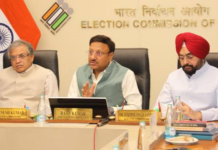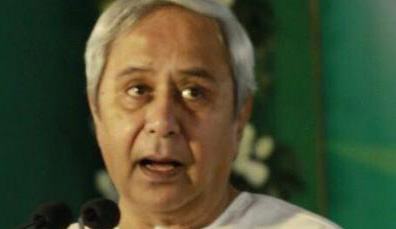Chief minister, Naveen Patnaik is now engaged in an exercise that would make him go down in history as one of the most benevolent leaders to have ruled the state. Having made himself indispensable for his party he is now focussing on developmental initiatives to close the gap between the people and the government. He is doing this with great zeal.
Chief minister, Naveen Patnaik’s hold on Biju Janata Dal (BJD) is complete. Having ensured that he has now embarked on a journey that would make him not only the most successful but also the most loved politician in the history of the state.There is a difference between being successful and being loved. The first one has to do primarily with a leader’s electoral record while the other would focus on his overall performance including his welfare initiatives. His public image is a product of these things.
In his latest drive Patnaik is ensuring that his government comes as close to the people as possible. Newspapers revently reported about tourism minister, Jyoti Prakash Panigrahi standing in a queue with other patients at the Bhima Bhoi Medical College and Hospital, Bolangir, to consult doctors for an orthopaedic problem. The minister, who was on a visit to the hospital to review the facilities as part of state government’s “Mo Sarkar” initiative, decided against flaunting his power which he could easily have done to get out of turn attention.
It is easy to dismiss such acts by politicians as stunts to seek favourable publicity. But even if one assumes, for argument sake, that the minister was only making a show of being a commoner his gesture has a symbolic value and is likely to enhance both his personal image and that of the government he represents. Such gestures are important.
It is significant to note that ministers and ruling party politicians have started behaving more responsibly and politely towards general public following the launch of Mo Sarkar, an initiative to bring the government closer to people. With chief minister, Naveen Patnaik himself monitoring the progress of the scheme, a part of his wider 5T initiative, they cannot afford to put a step wrong at the moment as far as their dealings with general public is concerned.
It is heartening to note that ministers and bureaucrats continue to visit hospitals and other such facilities to assess the quality of both service and infrastructure. Their visits will not only inspire confidence among people but also ensure regular feedbacks which will be of use in improving services. Slowly but steadily more and more government departments are being brought under the purview of Mo Sarkar which being the favourite scheme of the chief minister is being taken seriously both by ministers and bureaucrats.
The best part of it all is that while public representatives, specially ruling party ministers, MLAs and MPs, are realising for the first time the importance of getting in touch with people at the grassroots and getting their feedback, an effort is actually being made to improve services everywhere. At least a beginning has been made. Now what is needed is close monitoring from the top. That is the only way of ensuring the success of this laudable initiative.
That something like Mo Sarkar was in the offing had become clear soon after the elections when chief minister, Naveen Patnaik held his first meeting with the newly elected MLAs and sought to impress upon them, especially upon the first time MLAs, the need for reaching out to common people and understand their problems. He had also told them categorically that they should bring to his notice the problems which they failed to solve on their own.
Going a step forward now the government is also trying to involve people in this initiative. This will help it get direct feedback from them and take corrective measures where necessary. Such efforts are laudable considering that any government in order to be successful should be able to turn people into stakeholders in true sense of the term.
Patnaik is also taking other initiatives to make the presence of his government felt even in the remotest possible areas of the state. For example the residents of Dhuliput and Maliguda, the two remote villages under the Chitrakonda block of Malkangiri’s once infamous “cut-off” area, rechristened as Swabhiman Anchal following the inauguration of Gurupriya bridge in 2018, now have a metalled road.
Cut off from development these villages have for decades been part of a benighted hinterland where neither good roads exist nor people have access to quality healthcare and education. Worse they were forced to live under the shadow of Maoist guns.
What is significant is that the project costing Rs.24 lakh was executed by the newly formed Dhuliput panchayat which will now have its own office and anganwadi centre. Things are definitely changing in this area which was once seen as the backwaters of the civilized world.For several decades people of Swabhiman Anchal, which got cut off from the mainland following the construction of Machkund reservoir in 1960 and later the Balimela Hydel project, communicated with the mainland only with the help of boats. They faced all kinds of hardships, the most glaring being almost complete lack of health facilities. During emergencies they found it almost impossible to reach the mainland where better hospitals and health centres were located.It’s not that the administration did not want to help them. But reaching out to people of the area was a challenge. While there was hardly any communication facilities the fear of Maoists made government officials wary of venturing into the remote villages. Red rebels ruled the roost in the area and emboldened by their repeated success against the security forces they resorted to extreme daredevilry in 2011 kidnapping then Malkangiri collector, R. Vineel Krishna. Bringing development in such an area is a great achievement. With such initiatives Patnaik’s popularity is bound to grow.






































